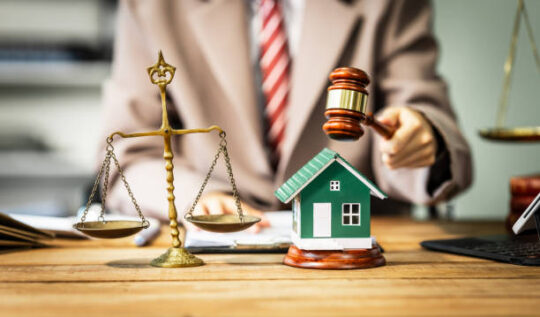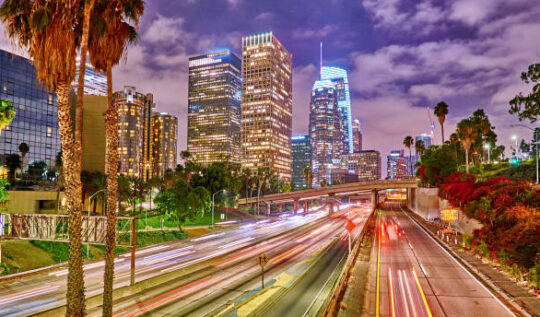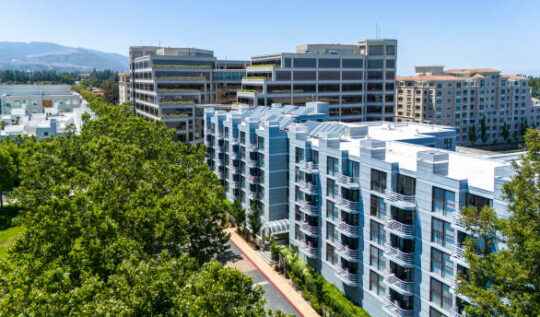How LA Zoning Rules Push Homes Into Fire-Prone Areas
Los Angeles is one of the most complex housing markets in the country. With limited supply, rising demand, and strict zoning, every decision about where to build carries weight. But one overlooked effect of LA’s zoning policy is now getting attention: restrictive land-use rules are pushing new housing into wildfire-prone areas.
Table of Contents
ToggleThis trend raises big questions for developers, investors, and city leaders. Why are families ending up in risky hillside neighborhoods? And what can be done to guide growth toward safer, more sustainable locations?
At JDJ Consulting Group, we work with these issues every day. Understanding how zoning interacts with fire risk is no longer optional — it is central to making smart development choices in Los Angeles.
Why Zoning Shapes Fire Risk
Los Angeles has large areas zoned almost entirely for single-family homes. In fact, nearly three-quarters of LA’s residential land is limited to one house per lot. These rules lock much of the city’s core into low-density housing.
The result? Demand spills outward. Families priced out of central areas often look to the hillsides and canyons on the edge of the city. These neighborhoods offer bigger lots and sometimes lower prices — but they are also in very high fire hazard severity zones (VHFHSZ).
This zoning pattern creates a chain reaction:
Core neighborhoods stay underbuilt. Multifamily housing is restricted where services and transit are strongest.
Hillsides absorb growth. Demand shifts to areas with more available land but higher risk.
Fire exposure rises. More people live in areas prone to wildfires, making evacuation and safety harder.
💡 Fire Risk Cost & Delay Estimator
Based on delays & extra costs discussed in JDJ article. Source: JDJ Consulting, 2025. :contentReference[oaicite:9]{index=9}
State and Local Policy at Odds
California has set ambitious housing goals. Yet local zoning often works against those goals. Instead of unlocking safe, transit-rich neighborhoods for new housing, many city policies keep density away from them.
State lawmakers are aware of the problem. Recent laws like SB 9 (lot splits) and ADU reforms aim to break down barriers in single-family areas. But local resistance means progress is slow.
Meanwhile, climate change makes wildfires more intense. Insurance companies are pulling out of California, and building in risky zones is getting harder to finance. This puts developers in the middle of competing pressures: local zoning rules that block growth in the core, and state policies pushing for more housing while climate risk grows.
Risks for Developers and Investors
Developers who pursue projects in high-fire areas face unique challenges:
Entitlement delays. Fire-prone parcels often require extra reviews, from environmental studies to safety plans.
Higher costs. Fire-resistant materials, slope stability, and road upgrades all raise construction expenses.
Insurance barriers. Coverage is harder to secure and often more expensive.
Regulatory shifts. Policies may tighten further, limiting approvals or increasing restrictions.
For investors, this creates uncertainty. A parcel that looks profitable today may face new limits tomorrow.
Equity and Planning Concerns
There is also a fairness issue. Many lower- and middle-income families move to fire-prone areas because they cannot afford homes in safer, centrally located neighborhoods. This outcome is not simply a personal choice — it’s shaped by zoning laws that restrict affordable housing types where demand is highest.
If LA continues on this path, it risks deepening inequality:
Wealthier homeowners in single-family zones avoid density and risk.
Working-class families take on higher danger and longer commutes.
Communities of color often bear the greatest exposure to climate-related risks.
This is not only a housing issue but also a public safety and social equity issue.
Smarter Growth Solutions
If Los Angeles wants to meet its housing goals and reduce fire risk, it needs to rethink zoning. Some solutions already exist:
Upzoning safe, transit-rich areas. Allowing more multifamily housing near jobs, schools, and services can absorb growth without pushing people outward.
Encouraging missing middle housing. Duplexes, triplexes, and courtyard apartments in single-family neighborhoods can provide new units without massive changes.
Limiting risky hillside expansion. Policies can steer development away from fire zones, paired with incentives to build elsewhere.
Leveraging state programs. SB 9, ADUs, and density bonuses already provide tools for creative infill development.
JDJ’s Role: Guiding Developers Through Risk
For developers, the message is clear: zoning and climate risk are now linked. Projects that ignore fire exposure may face major financial and regulatory hurdles.
At JDJ Consulting Group, we help clients:
Identify safe, strategic sites that balance opportunity with long-term stability.
Navigate entitlements in areas where fire and zoning policies overlap.
Use state housing laws to unlock potential on infill parcels.
Anticipate policy shifts so projects don’t stall midstream.
In today’s environment, zoning strategy is not only about maximizing density. It’s about aligning projects with sustainability, safety, and community resilience.
Conclusion: LA Zoning Rules Push Homes Into Fire-Prone Areas
LA’s zoning decisions are not just shaping where homes are built — they are shaping who lives with risk. By keeping most central neighborhoods off-limits to density, the city pushes families into areas where wildfires are an ever-present threat.
For developers and investors, this reality demands a new approach. The path forward is not ignoring risk but planning around it. That means choosing safer sites, leveraging state housing tools, and aligning with long-term sustainability goals.
At JDJ Consulting Group, we believe the future of LA housing lies in strategic growth that balances opportunity and safety. By guiding clients through zoning complexity and climate challenges, we help ensure that projects are not only profitable, but also built for resilience in the decades ahead.
Frequently Asked Questions
Zoning and Fire Risks
▶▼
How do zoning rules contribute to fire risks in Los Angeles?
Zoning laws restrict density in central areas, forcing housing growth into hillsides and canyons where fire risks are higher. This creates a mismatch between housing demand and safe locations.
- Central zones remain underbuilt despite infrastructure
- Hillside areas absorb demand, increasing fire exposure
- Limited evacuation routes worsen wildfire risk
- Zoning indirectly shifts population into vulnerable zones
▶▼
Why are homes being pushed into fire-prone areas?
Because most of Los Angeles is locked under single-family zoning, new supply can’t keep pace with demand in safer areas. Families end up in risky hillside regions instead.
- Single-family restrictions reduce infill opportunities
- Affordability pushes buyers and renters outward
- Safer, central neighborhoods remain inaccessible
- Expanding into hazard areas fills the supply gap
▶▼
What are Very High Fire Hazard Severity Zones (VHFHSZ)?
These are state-designated zones where wildfire risk is extreme due to vegetation, terrain, and climate. Homes in these zones face stricter building codes and higher insurance costs.
- Defined by CAL FIRE based on hazard mapping
- Concentrated in hillsides, canyons, and wildland edges
- Require fire-resistant construction and landscaping
- Carry increased insurance and evacuation challenges
▶▼
How do local zoning rules conflict with state housing goals?
State policies encourage more housing in central, transit-oriented areas, but local zoning often blocks density. This conflict shifts growth to unsafe zones, undermining both safety and housing affordability.
- State laws like SB 9 and ADUs expand housing
- Local restrictions preserve single-family exclusivity
- Misalignment creates housing shortages in safe areas
- Pushes construction into high-risk wildfire zones
Risks and Challenges for Developers and Residents
▶▼
What risks do developers face when building in fire-prone zones?
Developers encounter higher costs and regulatory barriers when building in wildfire areas. Insurance issues and unpredictable permitting add financial uncertainty.
- Mandatory fire-resistant building materials
- Slope and access requirements increase expenses
- Environmental reviews slow approvals
- Insurance coverage harder to secure or costly
▶▼
How do zoning policies affect low- and middle-income residents?
Restrictive zoning keeps safer neighborhoods expensive, pushing lower-income households to risky areas. These residents face longer commutes, higher fire exposure, and fewer emergency resources.
- Safer neighborhoods priced beyond reach
- Affordable housing clustered in risky areas
- Disproportionate burden on working families
- Greater vulnerability during emergencies
▶▼
Why is housing affordability tied to wildfire risk?
When safe, central housing is scarce, affordability declines. Families move into cheaper but fire-prone zones, trading safety for cost. This creates long-term social and economic vulnerabilities.
- Low supply raises central housing costs
- Fire-prone areas appear more affordable initially
- Long-term costs rise due to insurance and risk
- Families absorb greater exposure to disasters
▶▼
How does community opposition affect zoning reform?
Local resistance to upzoning keeps housing locked in single-family areas. While homeowners protect neighborhood character, these policies drive growth into unsafe fire zones.
- Residents oppose density in core neighborhoods
- Fear of traffic and property value decline
- Legal challenges delay zoning reform
- Resistance maintains risky housing patterns
Potential Solutions for Safer Growth
▶▼
What smarter growth strategies can reduce wildfire exposure?
The solution lies in allowing more housing in safe, central areas and limiting expansion into hazardous regions. Smarter planning balances supply, safety, and sustainability.
- Upzone near transit and infrastructure
- Encourage “missing middle” housing options
- Use density bonuses to support affordability
- Restrict new projects in hazard zones
▶▼
How can upzoning help address both housing and fire safety?
Upzoning permits multi-family housing in safer urban neighborhoods. By boosting supply in low-risk areas, it reduces pressure to build in fire-prone hillsides.
- Unlocks more units per parcel
- Reduces sprawl into dangerous terrain
- Supports affordability and access to jobs
- Aligns with state housing mandates
▶▼
What role do state housing policies play in this issue?
State laws like SB 9 and ADU reforms aim to override restrictive zoning. By mandating density, they help address supply shortages while steering growth away from fire-prone zones.
- SB 9 allows duplexes on single-family lots
- ADU reforms expand housing on existing parcels
- State mandates challenge local restrictions
- Encourages infill over risky expansion
▶▼
How does infill development improve safety and supply?
Infill uses vacant or underutilized lots in existing neighborhoods. This strategy increases housing where infrastructure and safety are stronger, reducing reliance on high-risk areas.
- Maximizes land in central neighborhoods
- Prevents expansion into wildfire zones
- Supports sustainable, transit-oriented growth
- Delivers diverse housing options quickly
The Role of Developers, Consultants, and Future Planning
▶▼
How can developers make projects safer and more resilient?
Developers should prioritize locations with lower fire risk and integrate resilient design. Working with consultants ensures compliance and better long-term outcomes.
- Select safer, central sites for projects
- Use fire-resistant materials and landscaping
- Plan evacuation routes into designs
- Leverage incentives for infill housing
▶▼
How does JDJ Consulting support developers in this landscape?
JDJ Consulting guides developers through zoning challenges, entitlement processes, and risk assessments. Their expertise helps shift projects toward safer, more viable areas.
- Zoning and entitlement navigation
- CEQA and fire compliance management
- Risk-aware site selection strategies
- Community engagement for project approval
▶▼
What future trends could reshape LA’s housing and fire risk?
Expect more state-led upzoning, tighter fire-zone restrictions, and stronger incentives for infill. These changes aim to balance housing growth with climate resilience.
- Broader zoning reform efforts statewide
- Increasing restrictions in hazard zones
- Faster permitting for infill housing
- Stronger emphasis on climate adaptation





